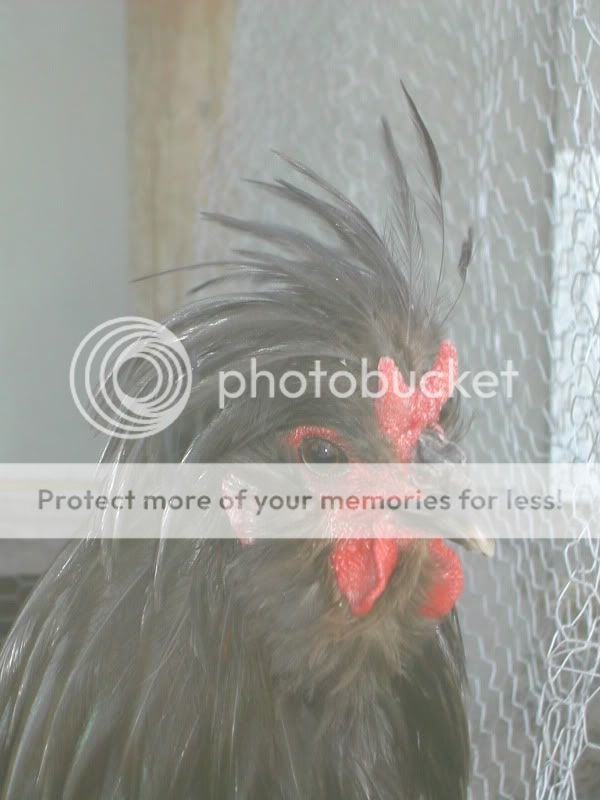Hi Kimberley, welcome! Good luck with your hen.
About Taprock's problem rooster: I think he is probably nothing to worry about - If you're able to keep him in a fenced area so he can't sneak up on you and do a surprise attack, that might be the best solution. You can even trim off his spurs if need be. Is there anything going on which could be making him especially protective or territorial? (Is he attached to a few non-Creve hens who hang out in some area he thinks of as "his")? Or did he just reach adulthood?
Crèvecoeurs were traditionally raised on small free-range farms in Normandy, and their "wild" attitude comes from having the kind of instincts that enabled them to do well in the days before modern confinement poultry raising. Their exceptional instincts allowed them to evade predators and find food in the fields. This alertness and wiliness is especially helpful since a crested bird may not be able to see predators as well as some of the clean-headed breeds.
As with other French dual breeds, the birds raised for meat were kept inactive not by breeding for sluggishness, but by keeping the doomed individuals for several weeks in a small finishing pen, where they were encouraged to eat large amounts of grain and milk to prepare them for the table.
Size and nice meaty muscles are not something you see a lot of in American Creves these days, but please don't blame this on the breed's temperament; it's because people have been focussing on attractive feathers and comb shape for years and neglecting to select to keep the size of their birds up.
You don't want a super nasty Crèvecoeur rooster, but he should have some spirit...
PS. does anyone out there actually have a Crèvecoeur with red-orange eyes, as per the standard? Of the two lines I raise, one has hazel eyes, and one has yellow eyes similar in color to those of a mottled Houdan.
Best - exop
About Taprock's problem rooster: I think he is probably nothing to worry about - If you're able to keep him in a fenced area so he can't sneak up on you and do a surprise attack, that might be the best solution. You can even trim off his spurs if need be. Is there anything going on which could be making him especially protective or territorial? (Is he attached to a few non-Creve hens who hang out in some area he thinks of as "his")? Or did he just reach adulthood?
Crèvecoeurs were traditionally raised on small free-range farms in Normandy, and their "wild" attitude comes from having the kind of instincts that enabled them to do well in the days before modern confinement poultry raising. Their exceptional instincts allowed them to evade predators and find food in the fields. This alertness and wiliness is especially helpful since a crested bird may not be able to see predators as well as some of the clean-headed breeds.
As with other French dual breeds, the birds raised for meat were kept inactive not by breeding for sluggishness, but by keeping the doomed individuals for several weeks in a small finishing pen, where they were encouraged to eat large amounts of grain and milk to prepare them for the table.
Size and nice meaty muscles are not something you see a lot of in American Creves these days, but please don't blame this on the breed's temperament; it's because people have been focussing on attractive feathers and comb shape for years and neglecting to select to keep the size of their birds up.
You don't want a super nasty Crèvecoeur rooster, but he should have some spirit...
PS. does anyone out there actually have a Crèvecoeur with red-orange eyes, as per the standard? Of the two lines I raise, one has hazel eyes, and one has yellow eyes similar in color to those of a mottled Houdan.
Best - exop








